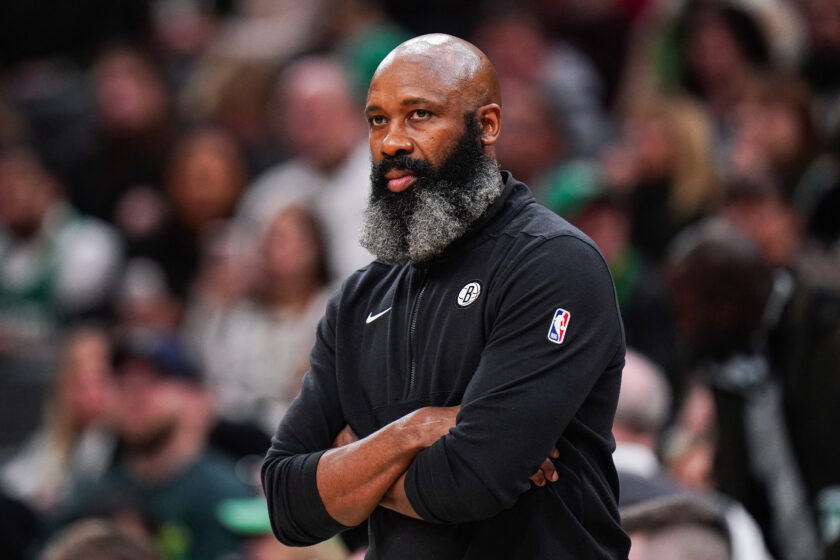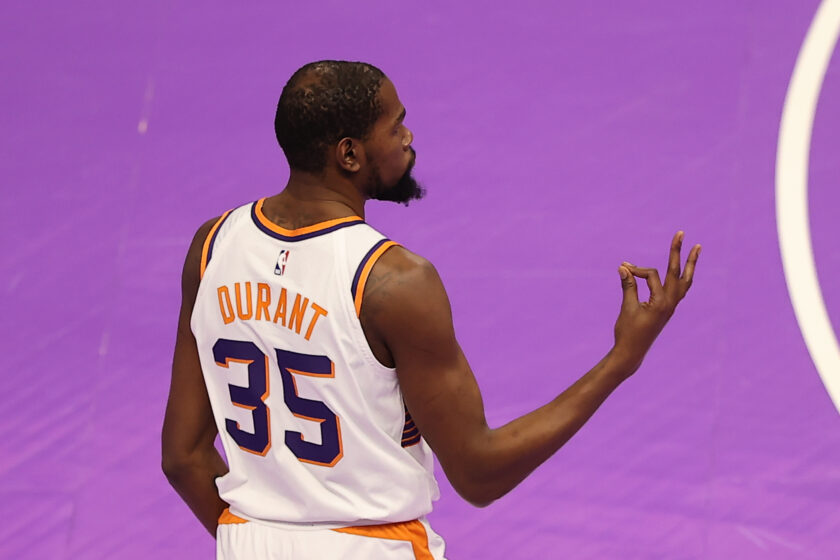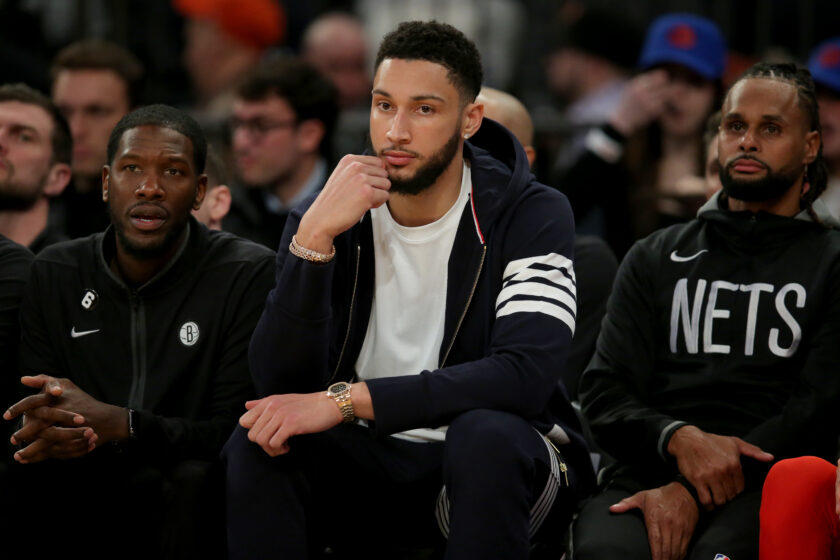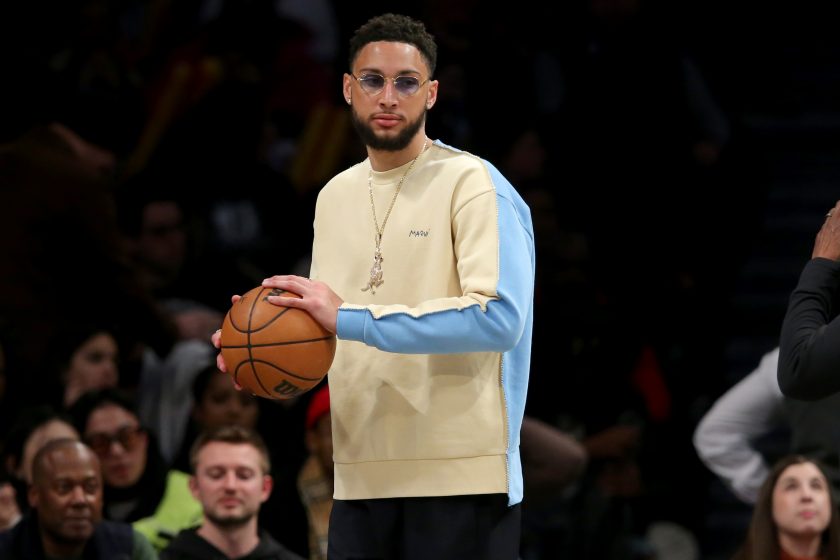Brooklyn Nets: Learning how to finish strong is the next step (Film Room)

The Brooklyn Nets are close to turning a corner and they’re showing offensive promise, but they must learn to finish close games.
Last week, I detailed the similarities on offense between the Brooklyn Nets and the Houston Rockets. In summary, the Nets mirror the Rockets by way of their volume three-point shooting, their avoidance of the midrange, the usage of their guards, and their isolation scoring.
The sheer amount of statistical similarities between the two teams on offense was astounding. However, there was one metric where the Rockets and the Nets were vastly different.
According to NBA.com, the Houston Rockets rank at the bottom of the league in passing with 247.3 passes per contest.
| RANK | TEAM | GP | PASSES MADE |
|---|---|---|---|
| 30 | Oklahoma City Thunder | 11 | 232.4 |
| 29 | Houston Rockets | 10 | 247.3 |
| 28 | Toronto Raptors | 12 | 263.8 |
In many ways, their lack of ball-movement makes sense. The Rockets are well-renowned for their drive-and-kick offense. A majority of the Rockets’ possessions are dominated by their All-Star guards, James Harden and Chris Paul, who use their elite isolations skills to initiate the offense. Both players have some of the sweetest crossover moves in the league and can break down defenders at will.
Their ability to gain separation in one-on-one situations gives them more freedom to create. Being able to lose defenders by simply dribbling gives Harden and Paul the option to choose any of the following ways to score: step back and pop a three-pointer, drive to the cup, pull-up from midrange, dish alley-oop passes to a rim-running big, or even kick out to wide-open three-point shooters. These, by the way, are all plays that Harden and Paul are more than comfortable with making.
Although it may seem countercultural to let two players dominate the ball so much in our movement-centric league, the Rockets best chance to win is to do exactly that; let Paul and Harden pound the ball and isolate.
With this in mind, it should come to no surprise to anyone that the Rockets tend to avoid swinging the ball around on offense. There are only 24 seconds on the shot clock each possession, and the Rockets best method of scoring is to let Harden and Paul do their thing.
Here’s where it gets interesting, though.
While the Rockets are one of the bottom three teams in passes per game, the Brooklyn Nets rank on the complete opposite side of the spectrum. The Nets rank fourth in league in passes per game, at 316.9 per contest.
| RANKING | TEAM | GP | PASSES MADE |
|---|---|---|---|
| 1 | Phoenix Suns | 11 | 341.1 |
| 2 | Memphis Grizzlies | 10 | 338.9 |
| 3 | Denver Nuggets | 11 | 321.1 |
| 4 | Brooklyn Nets | 11 | 316.9 |
On the outside looking in, this doesn’t really make sense. The Nets appear to be living within a paradoxical world in the way that they score.
As I just mentioned, there are only 24 seconds on the shot-clock. Passing around the perimeter to find open shooters is an effective but time-consuming method of scoring that takes up a majority of the shot clock. Isolating is a tried and true way of scoring, popularized by cult heroes such as Michael Jordan and Kobe Bryant. It does, however, also eat up shot clocks.
With only so much time to spare on offense, how is it that the Nets are league leaders in both frequency of isolation and passes per game?
The answer can be found when looking at shot-clock shooting statistics. According to NBA.com, the Brooklyn Nets rank second in the entire league when it comes to frequency of shots “very late” in the shot clock. (For reference, “very late” can best be defined as 0-4 seconds remaining in the shot clock).
A majority of the Nets’ possessions begin with the young squad swinging the ball around the perimeter, searching for open shooters. If all goes right, the results can look downright gorgeous, as seen here:

This is straight out of the 2013-2014 San Antonio Spurs playbook! Wonderful stuff.
However, if the team is unable to find an open three-point shooter, they tend to go into isolation mode with very little time left on the clock. All four of their guards (Dinwiddie, LeVert, Russell, and Napier) are more than happy to take on that Mamba Mentality and attempt to create off-the-dribble.
Shooting so late in the shot-clock places the players in tough situations. At times, the results aren’t exactly pretty, as seen here in these back-to-back third-quarter possessions against the Rockets:

More often than not, however, the team is actually pretty good at producing in late-clock situations. The Nets are shooting a very tidy effective field goal percentage of 51.3 with 0-4 seconds remaining on the clock, second to only the Golden State Warriors.
With a forward-thinking offense, elite numbers in late-clock situations, and a solid defense (ranked 17th in the league), it seems that surprising that the Brooklyn Nets are only 6-6 on the season.
Here’s where we get to the juicy stuff.
The Nets are 3-4 on the season in clutch situations according to NBA.com. The NBA defines “clutch” as the last five minutes of the game. Let’s again, take a gander at the Nets statistics late in the clock, this time with the parameter of only within the fourth quarter.
Tinkering with the numbers a bit, you’ll notice that the Nets take the third-most three-pointers in the fourth quarter with 0-4 seconds remaining on the clock. You’ll also notice that the team is shooting a vomit-inducing 6.7 percent from long-range.
I expect many of you to roll your eyes, mutter something about sample size, and close out this browser. To that I say — I completely understand your skepticism! Bear with me for a second, though.
For those who have been watching this exciting Brooklyn team closely, you’ll know that a couple things plague this team. The first is turnovers, which is a widely discussed issue, but not the issue we’re looking at right now.
The second issue, and one that is seldom discussed, is the team’s tendency to barf up contested three-pointers in the last five minutes of the game.
When a game is close, defenses tighten up in the last five minutes of play. In general, the NBA’s best offenses are the ones that can persevere in the midst of this added pressure.
This year, the Nets have been able to compete with some of the league’s best teams. In some of their biggest games, the Nets have showcased poise throughout the first three quarters, remaining neck-and-neck in scoring against top teams. This was best seen in the games against the New Orleans Pelicans and the Houston Rockets, both of whom advanced to the playoffs last season.
Things changed in the last five minutes of both games as the Nets coughed away their lead thanks to a predictable offense and a barrage of turnovers.
Against the Rockets, their uninspiring offense, full of contested pull-up threes, was on full display.

With five seconds remaining on the shot-clock and about 25 feet separating the ball and the basket, Spencer Dinwiddie is forced into ghastly three-point attempt that careens off the front rim.
A couple of possessions later, we see an even better example of the Nets’ flat offense.

The team begins the possession by swinging the ball around the perimeter, searching for an open shooter. Due to increased intensity on the defensive end, this shooter does not appear. As a result, Joe Harris, of all people, attempts to isolate and drives to the hoop. Lumber Joe Harris is good at many things, but this was not the play Brooklyn wanted at this stage. With limited athleticism to deploy, Harris is forced into giving up the ball.
The ball ends up in the hands of Rondae Hollis-Jefferson, a non-shooter spotting up in the corner. Given that he is guarded closely, Hollis-Jefferson barricades to the rim and rises up for an awkward off-hand push shot. With his body oriented away from the rim, the ball unsurprisingly bricks off the side of the cup.
Even when the Nets find shots that are somewhat open, the results aren’t much better.

Here, the Nets find a wide-open Hollis-Jefferson spotting up from three in the corner. At this point in time, the Nets had blown a double-digit lead against the Rockets and hadn’t made a shot since the 6:50 mark in the fourth quarter.
Normally, a wide-open corner three-pointer would be the perfect antidote to a scoring drought. Unfortunately for the Nets, Hollis-Jefferson had failed to make a single three-pointer until their Friday night bout with the Nuggets. Simply put, there’s a reason he’s wide open.
The last clip is perhaps my favorite one, considering it encompasses everything discussed so far.

With 40 seconds remaining in a close game against the Pelicans, the Nets have the ball up 115-112. All the team needs to do is score in order to ice the game.
After a series of unsuccessful passes, Caris LeVert ends up with the ball in his hands. With only seconds to spare, Caris LeVert fakes, side-steps, and launches a pull-up three. Clank.
24 seconds later, the Brooklyn Nets lose in heart-breaking form, as Jrue Holiday of the Pelicans splashes in a gut-wrenching game-winner. Ouch.
https://www.youtube.com/watch?v=3K0gDRK4_RQ
Slowly but surely, this Brooklyn Nets team will figure out how to win close games. As the season progresses, it will become increasingly obvious to the team, the fans, and the media as to who the go-to scorer is on this roster.
As a matter of a fact, that clutch guy may be staring us dead in the face.
GAME-WINNER. @CarisLeVert. #WeGoHard https://t.co/Btz2ljJTZA
— Brooklyn Nets (@BrooklynNets) November 10, 2018
The Nets secured a victory over the Nuggets by executing down the stretch. That’s not something the Nets have done consistently this season, but the LeVert bucket over Denver could be a sign of things to come. The Nets appear to be coming together as a team and learning how to win tight games could be the only thing holding Brooklyn back.
[sc name=”Nets Link Related” link=”https://elitesportsny.com/2018/10/29/brooklyn-nets-caris-levert-rightful-face-franchise/” text=”Caris LeVert Is The Face Of The Franchise” ] [sc name=”Nets Footer”]An NBA fanatic who specializes in the advanced analytics of the game. I cover the Brooklyn Nets here in the city. Follow me on Twitter for semi-witty basketball tweets. @MattBrooksNBA






